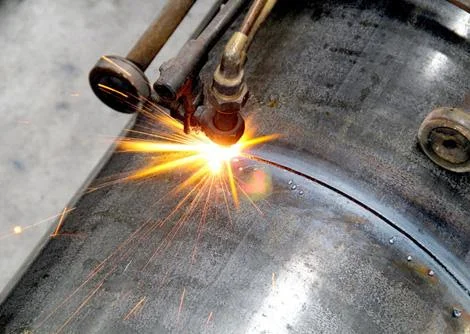Easily overlooked problems in steel pipe welding
In the process of steel pipe welding, there are many precautions. If you neglect it, you may make a big mistake. The welding construction does not pay attention to selecting the appropriate voltage, whether it is for bottoming, filling, or covering, regardless of the size of the groove, choose the same In this way, the required penetration depth and penetration width may not be reached, and defects such as undercut, porosity, and spatter may occur. Generally, the corresponding long arc or short arc should be selected according to different situations to obtain better welding quality and work. efficient.
Welding does not control the welding current. In order to speed up the progress, the butt welds of the medium and thick plates are not grooved. The strength index drops or even fails to meet the standard requirements. Cracks appear during the bending test, which will make the performance of the welded joints not guaranteed. For structural safety, the welding should be controlled according to the welding current in the process qualification, allowing 10 to 15% floating, and the blunt edge of the groove should not exceed 6mm. When the plate thickness exceeds 6mm, the groove should be opened for welding.
Do not pay attention to the coordinated use of welding speed, welding current, and electrode diameter. During welding, the welding speed and welding current are not carefully controlled. The electrode diameter and welding position are coordinated and used. The size is narrow, if the welding speed is too fast, the root gas and slag inclusions do not have enough time to discharge, and it is easy to cause defects such as root failure, slag inclusions, and pores.
During cover welding, if the welding speed is too fast, porosity is likely to occur. If the welding speed is too slow, the weld reinforcement will be too high and the shape will be irregular. When welding thin plates or welds with small blunt edges, the welding speed is too slow and easy Burn through, welding speed has a great influence on welding quality and welding production efficiency. When selecting, choose the appropriate welding speed in accordance with welding current, weld position, weld thickness and groove size to ensure penetration, gas, and welding slag Under the premise of easy discharge, no burn-through, and good forming, choose a larger welding speed to increase production efficiency.
When welding, do not pay attention to controlling the arc length. The arc length is not properly adjusted according to the groove form, the number of welding layers, the welding form, and the electrode type. Due to the improper use of the welding arc length, it is difficult to obtain high-quality welds.

In order to ensure the welding quality, the welding generally adopts short arc operation, but the appropriate arc length can be selected according to different conditions to obtain the appropriate welding quality. For example, the first layer of V-groove butt joint and corner joint should use a shorter arc. In order to ensure penetration and avoid undercut, the second layer can be slightly longer to fill the weld. Short arc should be used when the weld gap is small, and the arc can be slightly longer when the gap is large, and the welding speed will increase. No matter what welding is adopted, it is moving During the process, care should be taken to keep the arc length basically unchanged to ensure that the melting width and penetration depth of the entire weld are consistent.
SSAW steel pipe (spiral submerged arc welded steel pipe) is formed by spiral bending of hot-rolled strip steel, and spiral seam steel pipe (also called spiral welded pipe, spiral pipe spiral steel pipe) is formed by automatic welding of submerged arc for inner and outer joints.
Note:SSAW steel pipe (spiral submerged arc welded steel pipe) is formed by spiral bending of hot-rolled strip steel, and spiral seam steel pipe (also called spiral welded pipe, spiral pipe spiral steel pipe) is formed by automatic welding of submerged arc for inner and outer joints.






